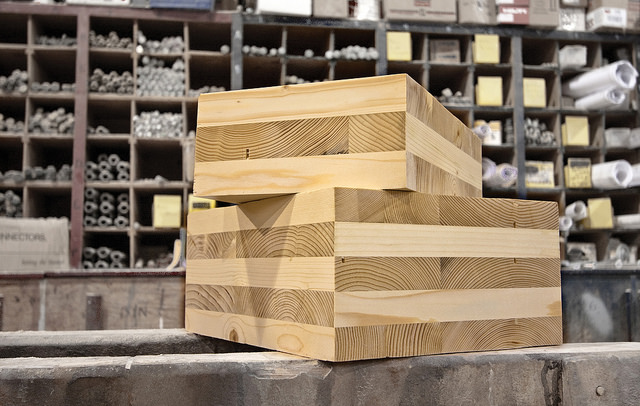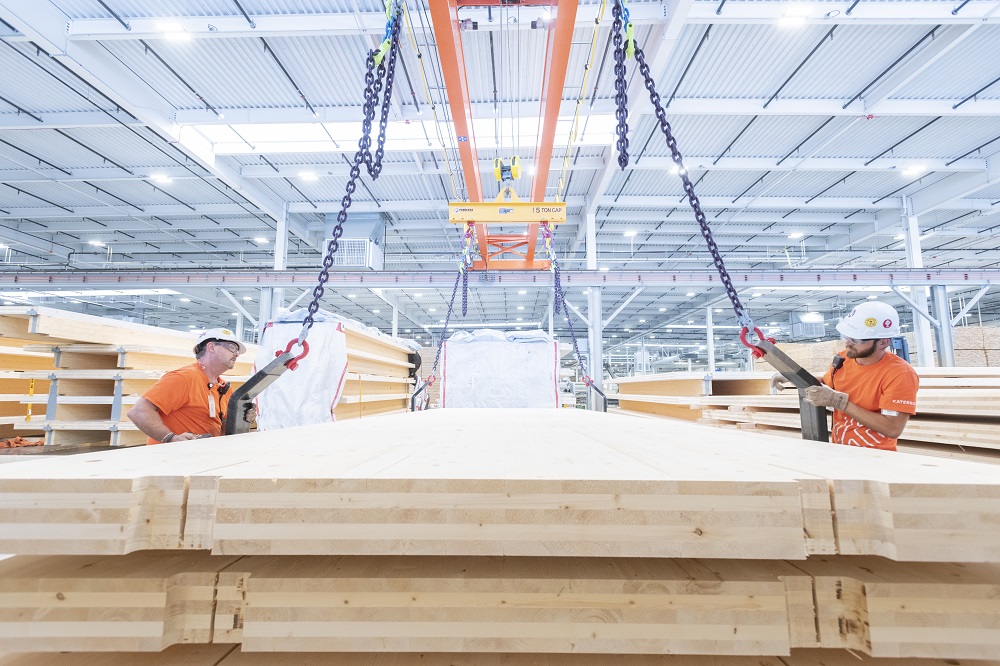Buildings have been made with wood for thousands of years, but those buildings rarely make it above a couple stories high. Due to building codes and requirements, non-combustible materials like concrete and steel are required to be used in most commercial buildings. Typical timber buildings, like many North American houses will easily burn in the right conditions, but more and more projects are using cross-laminated timber (CLT) which has excellent non-combustion properties. Because of that, the International Building Code has adopted it as an alternate material in the 2015 version.
Quebec, Canada based firm, Nordic Structures, is ready to join the arms race for North America’s tallest wood structure. The Origine Condominium Complex is set to start construction in the Fall of 2015 and reach roughly 134 feet in height (40.9 meters). Once complete, the 12 story condominium will supplant the 96 foot tall Wood Innovation and Design Centre in Prince George, British Columbia, which opened in October of 2014.
Even though North America is slowly allowing the use of CLT, it takes a lot to convince jurisdiction of the fire safety. In order to approve the design of this building, Nordic had to undergo two fire tests: a furnace test and a demonstration with a three story mockup of the condo’s elevator shaft. The first test required the weight of 11 stories to be placed upon a mockup of a wall and floor. The wall was then set ablaze inside a furnace to see how long it would take for the wall to succumb to the flames. The requirement is 2 hours, but the CLT wall withstood 2192 degrees Fahrenheit for 3.5 hours.
The second test required a three story model of the condo’s elevator shaft to be build and a one story room attached to it was set on fire to see how the condo would react. Again, the design passed with flying colors, with no visible signs of smoke or temperature increase in the elevator shaft.
Cross Laminated Timber. Photo by the Oregon Department of Forestry, CC BY 2.0
The secret of the fire resistance is the construction of the cross-laminated timber, also known as mass timber, panels. According to Nordic’s website, “The burning rate of wood structural elements depends on the species used and their thickness, the moisture content, and the amount of exposure to fire. Mass timber burns slowly since a carbon layer forms on the surface and impedes combustion. Its resistance is relatively unaffected by heat.” The tightly stacked layers of wood also provide a fantastic thermal barrier, with estimated savings of 40%.
This CLT building also has one other major benefit: it’s 45 percent lighter than similar non-wood buildings, which would have been too heavy for the soggy soils in the area, according to the Globe and Mail.
Many other wood buildings have been proposed, such as this 36 story tower in Paris, and an 18 story tall building at the University of British Columbia, so it’s not clear how long the Origine will actually hold the record.
Canada and Europe have certainly jumped on board the CLT train, we can only wonder when the United States will finally start taking it seriously.
You can read the full story from the Globe and Mail here.












Like most of the other electric machines that have been announced previously, Volvo promises that this midsized, 14 metric ton excavator will have the same performance as a similarly sized diesel version. The X03 is currently in the concept stage, so Volvo does not have immediate plans to bring it to market, but it shows the possibilities that electronics on heavy machinery can allow for.